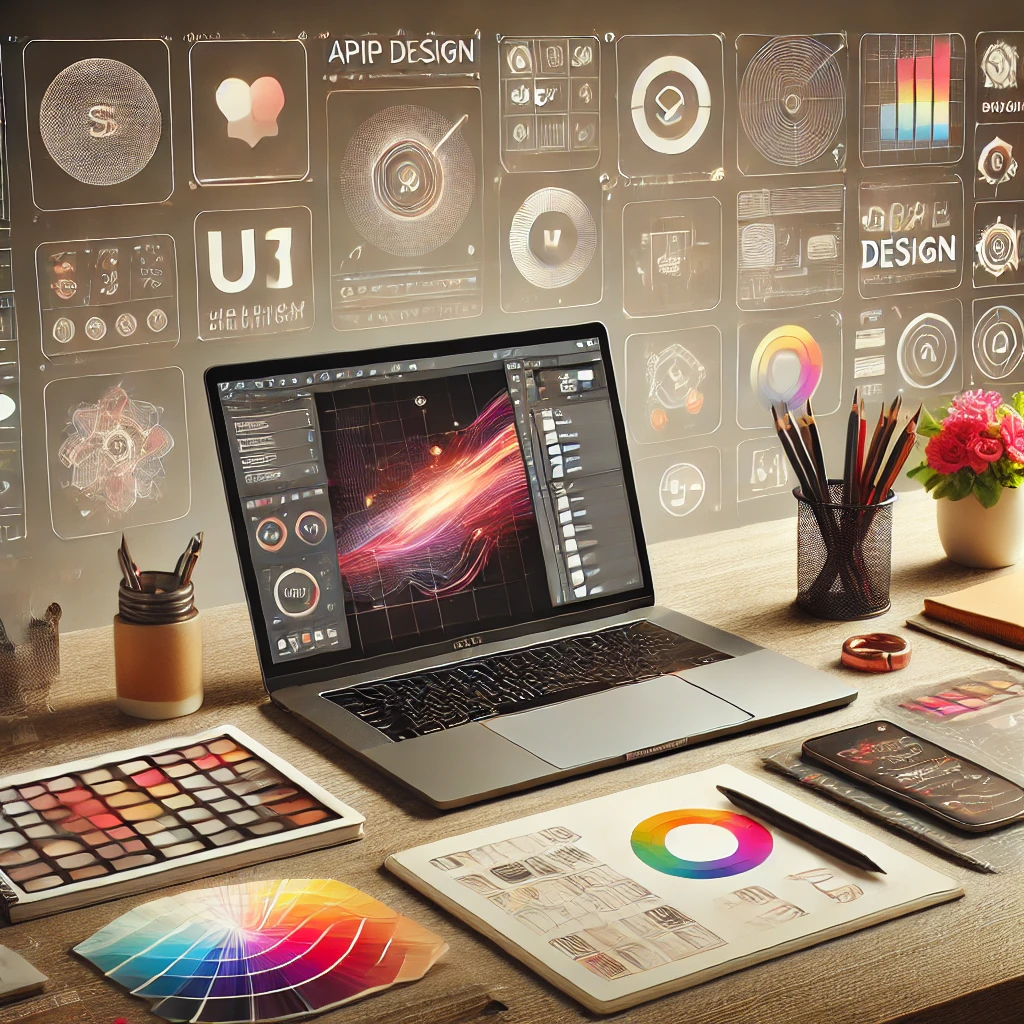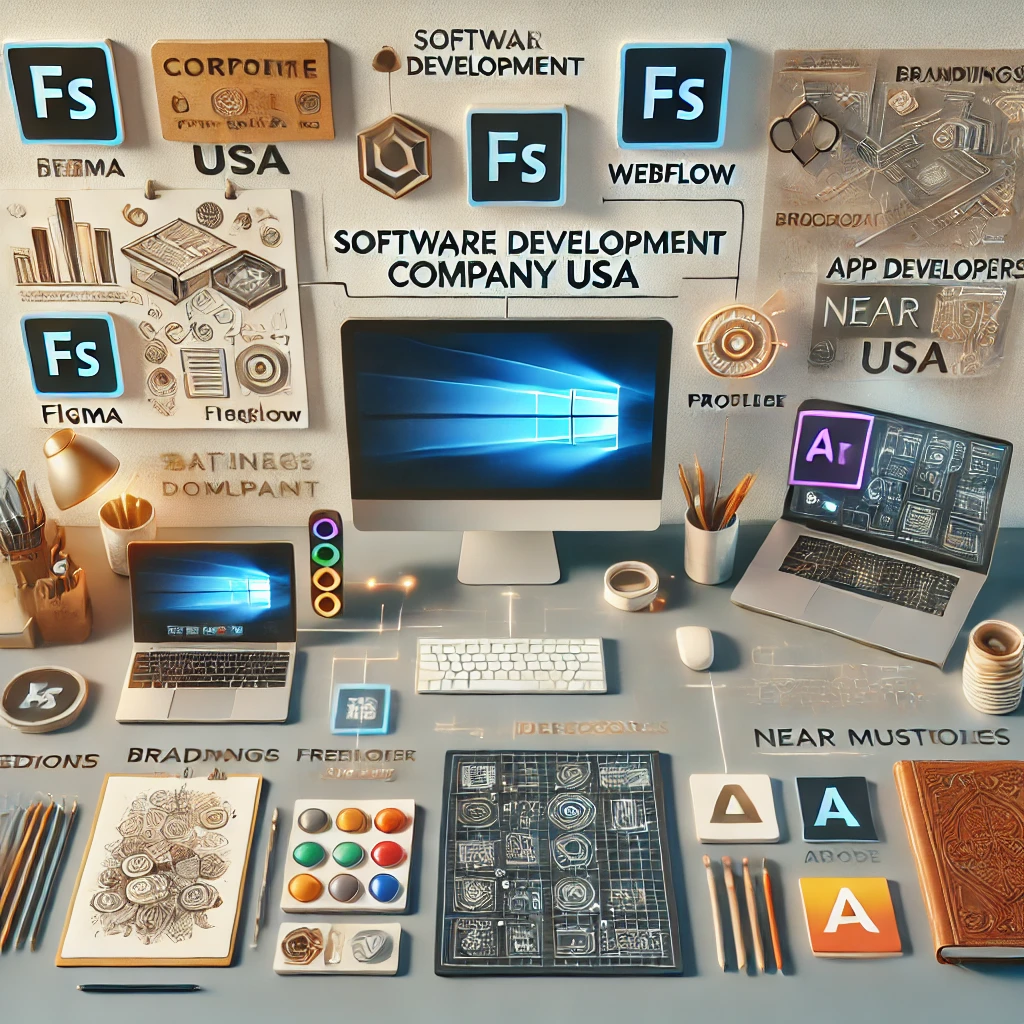"Design adds value faster than it adds cost." – Joel Spolsky
In a world where attention spans are shrinking and brand impressions are made in milliseconds, graphic design isn’t just about looking good—it’s about communicating effectively. Whether you're designing an app interface, building an ecommerce platform, or branding a business from scratch, the tools you use will shape your success.
For graphic designers, mastering the right tools isn't optional—it's a must. And for business owners, understanding what tools your design team should use helps you make smarter hires and investments.
In this blog, we'll cover the essential tools every graphic designer should master in 2025. These tools aren't just industry standards—they're business accelerators.

No list of design tools is complete without Adobe Creative Cloud. Whether you’re creating a sleek logo or a responsive web layout, Adobe has you covered.
A household name for a reason. Photoshop is the king of raster-based design—used for photo editing, digital painting, and everything visual. From ecommerce banners to app mockups, this tool handles it all.
Illustrator rules the world of vector graphics. It’s perfect for logos, icons, infographics, and scalable illustrations that don't pixelate at any size. It’s essential in website design AI projects where scalable UI elements are needed.
If you’re working with brochures, magazines, or multi-page documents, InDesign is the go-to. It integrates seamlessly with other Adobe tools and is ideal for layout-heavy projects.
Why it matters: Adobe’s tools are versatile, powerful, and universally recognized by clients and agencies alike.
Figma is the tool of choice for UI/UX designers and development teams. It's browser-based, lightweight, and supports real-time collaboration—a must for today’s hybrid and remote workflows.
Designers working on web development AI or app design love Figma’s prototyping tools, clean interface, and community-driven plug-ins. It’s especially strong for responsive layout design.
Why learn Figma? It bridges the gap between designers and developers. And yes, it scales beautifully.
While not a replacement for Adobe, Canva is a brilliant tool for marketing teams, startups, and quick internal designs. Its drag-and-drop editor, templates, and asset libraries make it ideal for non-designers or for rapid content creation.
If you’re part of a professional website design company, Canva helps deliver fast mockups or social assets without pulling in a full design team.
Why it counts: Time is money. Canva gets the job done—fast.
Exclusively on iPad, Procreate has redefined how illustrators work. With a brush engine that mimics real media and pressure sensitivity support, it’s a favorite for sketching, storyboarding, and character design.
For custom branding, especially in ecommerce and custom development, original illustrations from Procreate can bring uniqueness to any visual identity.
Why learn it? If you draw or storyboard, this is your digital sketchbook.
Webflow lets designers build full websites visually—without needing to write a single line of code. But here’s the beauty: it still generates clean, semantic HTML, CSS, and JavaScript behind the scenes.
Designers working in responsive web design or custom software development services use Webflow to create and publish stunning sites without relying on developers.
Why it rocks: Design, prototype, and deploy from a single tool. Clients love the speed.
Blender is an open-source tool for 3D modeling, animation, and rendering. It's being increasingly used in branding, motion graphics, and even UI animation for mobile apps.
Imagine using Blender to render a 3D product model in your ecommerce website development project—that’s design that sells.
Why it's vital: 3D and motion design are the future. Blender prepares you for both.
The Affinity lineup—Designer, Photo, and Publisher—offers a one-time payment alternative to Adobe without sacrificing quality.
They’re powerful, resource-efficient, and gaining traction among freelancers and startups. Affinity Designer especially shines in both vector and raster workflows.
Why it matters: Not every client can afford Adobe. Mastering Affinity broadens your toolkit and appeal.
CorelDRAW is still used widely in industries like manufacturing, signage, and packaging. Its AI-powered layout tools, multi-page support, and quick rendering features make it ideal for high-volume visual content.
Designers in custom CRM development company spaces sometimes integrate Corel-created visuals into software interfaces and dashboards.
Why to learn it: It’s still huge in the B2B print space. Ignore it and you might miss entire industries.
If you're already in the Adobe world, Adobe XD is a fantastic choice for prototyping, user testing, and creating wireframes. It supports mobile app developers USA and web designers working on cross-platform products.
Why it's useful: Seamless integration with Photoshop and Illustrator makes your workflow tighter and faster.
Creativity isn’t linear. Tools like Notion and Milanote let designers track ideas, create moodboards, and share notes with teams or clients.
Milanote is ideal for inspiration boards and concept mapping. Notion is great for task management and collaboration.
Why they're essential: Great design starts with great planning.
AI is making big moves in design. Tools like Adobe Firefly, Runway ML, and Khroma are revolutionizing how designers work by automating image generation, color palettes, and layout creation.
These tools are reshaping web design services in USA, enabling designers to work faster and with more accuracy than ever before.
Why adopt AI? It doesn’t replace creativity—it amplifies it.
A great design needs great typography and a thoughtful color palette. Tools like FontBase, Google Fonts, Coolors, and Adobe Color help in picking and managing type and palettes.
Whether you're designing an app for a startup or branding a legacy company, color and type choices define the tone of your work.
Why it’s key: Details matter. The wrong font can ruin the right message.
Whether you’re a software development company USA or a local freelancer, the tools you choose should align with your projects. For mobile and Flutter app development services USA, Figma, XD, and Webflow are must-haves. For branding and print, Adobe and Affinity reign. For illustration, Procreate and Blender offer endless possibilities.
If you're a business owner searching for app developers near me USA, understanding these tools can help you vet potential partners more effectively.

Mastering these essential tools empowers you to design better, communicate more clearly, and deliver value faster. Whether you’re creating a responsive website, a custom app, or a complete brand package, these tools shape your impact.
At the end of the day, graphic design is more than pretty visuals. It’s business strategy made visible. And the tools we’ve covered aren’t just for creatives—they’re for growth-minded businesses too.
At Ksoft Technologies, our design experts use the very tools listed above to build high-performance websites, apps, and brand experiences. Whether you're a startup looking for sleek UI/UX or an enterprise needing full-service custom software development, we deliver. As a professional website design company with a footprint across the U.S. and Canada, we make sure our design solutions don’t just look great—they perform.
Let’s build smarter. Let’s design better. Let’s grow, together.
